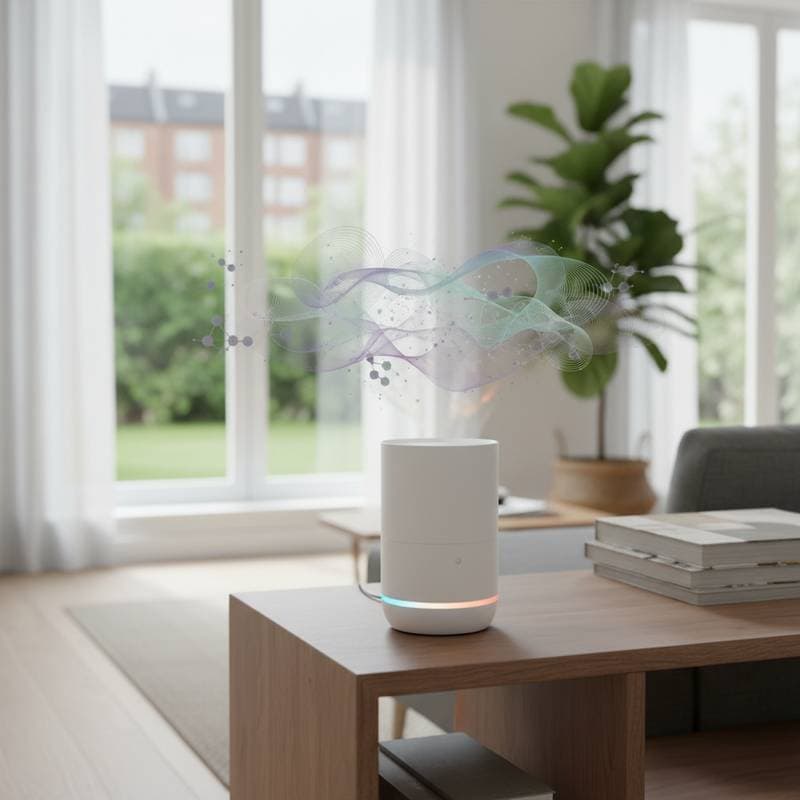Understanding Volatile Organic Compounds in Indoor Air
Volatile organic compounds, or VOCs, represent a diverse group of carbon-based chemicals that evaporate easily at room temperature. These substances emanate from paints, cleaning supplies, furniture, and personal care products commonly found in homes. Exposure to elevated VOC levels over time may lead to respiratory issues, headaches, and long-term health concerns, making detection crucial for maintaining safe indoor environments.
Unlike visible dust or smoke, VOCs remain undetectable to the human senses, which underscores the need for specialized monitoring tools. Indoor concentrations often exceed outdoor levels due to limited air exchange in enclosed spaces. Recognizing sources helps in proactive management, but precise measurement requires technological assistance.
The Function and Benefits of VOC Sensors
VOC sensors operate by identifying and quantifying specific chemical vapors in the air through advanced detection methods, such as photoionization or metal oxide semiconductor technology. These devices convert gaseous compounds into measurable electrical signals, displaying results in parts per billion or million for accurate assessment. Portable and fixed models cater to different needs, from spot checks to continuous monitoring.
The primary benefit lies in early warning capabilities, allowing residents to address pollution sources before symptoms arise. Integration with smart home systems enables automated alerts and data logging for trend analysis. Regular use promotes healthier living spaces, particularly in homes with vulnerable occupants like children or those with allergies.
Selecting the Right VOC Sensor for Your Home
Choose a sensor based on sensitivity range and target pollutants; broad-spectrum models detect multiple VOC types, while specialized ones focus on formaldehyde or benzene. Look for certifications from bodies like the EPA or UL to ensure reliability and accuracy. Battery life, display clarity, and ease of calibration influence long-term usability.
Consider your home size and layout when deciding between handheld units for occasional use or stationary ones for ongoing surveillance. Budget options start around basic detectors, but investing in models with app connectivity yields greater convenience. Test the device upon purchase to verify functionality in your specific environment.
Optimal Placement and Usage Strategies
Position sensors in high-traffic areas like kitchens and living rooms, where VOC-emitting activities occur frequently. Avoid direct sunlight, drafts, or proximity to heat sources, as these factors can skew readings. Elevate units to breathing height, approximately four to five feet from the floor, for representative air sampling.
Conduct baseline measurements with windows closed to establish normal levels, then monitor during potential emission events such as painting or cleaning. Log readings over several days to identify patterns and peak times. Combine sensor data with ventilation adjustments for comprehensive air quality management.
Interpreting Sensor Readings and Taking Action
Typical safe VOC levels fall below 0.5 parts per million, though standards vary by compound; consult device guidelines for thresholds. Elevated readings signal immediate ventilation or source removal, such as airing out new furniture. Track fluctuations to pinpoint contributors like adhesives or solvents.
If levels persist above safe limits despite basic measures, consider professional indoor air quality assessments for deeper analysis. These experts use advanced equipment to identify specific contaminants and recommend tailored solutions. Consistent monitoring empowers informed decisions that enhance overall well-being.
Integrating Ventilation and Professional Support
Effective ventilation dilutes VOC concentrations by introducing fresh outdoor air; employ exhaust fans in bathrooms and kitchens during use. Install mechanical systems like heat recovery ventilators for energy-efficient air exchange in tightly sealed homes. Schedule seasonal maintenance to keep ducts clean and systems operational.
Professional testing proves essential in scenarios involving renovations, new builds, or health symptoms linked to air quality. Certified inspectors evaluate multiple parameters beyond VOCs, providing reports with remediation plans. Combining sensors with expert input creates a robust defense against invisible threats.
Building a Healthier Indoor Environment
Adopting VOC sensors transforms awareness into action, fostering spaces where air quality supports daily life without compromise. Simple habits, informed by reliable data, reduce exposure risks and promote vitality. Prioritize these tools to ensure your home remains a sanctuary of clean, breathable air.
